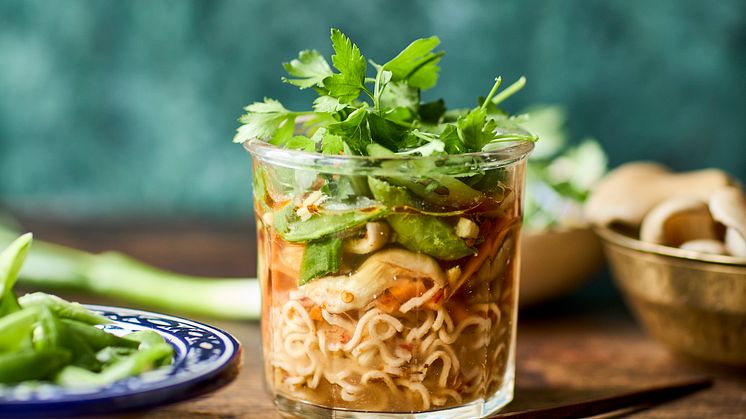
Nyhed -
Forarbejdning og sundhedseffekter - fuldkornsprodukter i fødevareklassifikationssystemer
Ultraforarbejdede fødevarer er et emne, der optager os i Fuldkornspartnerskabet. Derfor har vi mødt Elissa Price, som er PhD studerende på sidste år ved University of New South Wales i Sydney, Australien til et interview om hendes forskning i kategoriseringen af fuldkornsprodukter i fødevareklassifikationssystemer med fokus på forarbejdning og sundhedseffekter. Læs det spændende interview her:
1.Short bio. Elissa Price
I am a final year PhD Candidate at the University of New South Wales in Sydney Australia supervised by Professor Eleanor Beck, Professor Marijka Batterham, and Dr Eden Barrett. My PhD research focuses on the categorization of whole grains in food classification systems, particularly focusing on processing and health outcomes. In addition, I have combined my studies with experience working as a private practice dietitian in community disability, chronic disease, and lifestyle management.
2.What is the focus of your work with whole grains?
My work with whole grains explores their categorization within food classification systems. I have primarily explored whole grains in the context of the Nova classification system. We have completed dietary modelling excluding foods high in wholegrain from the ultra-processed foods defined by the Nova system. This highlighted that these higher whole-grain foods do not appear to contribute to poor health associations which have been identified with high intake of ultra-processed foods. We have recently completed work comparing whole-grain foods considered non-ultra-processed versus ultra-processed and differences in their associations with cardiometabolic risk measures. These results have been interesting, and we look forward to sharing them soon. To round out my PhD, I am talking to consumers about their perceptions and understanding of food processing related to whole grains.
3.What messages from your research do you wish everyone knew?
My hope is to educate consumers on the benefits that are associated with whole-grain foods, especially how some forms of processing may have positive effects including nutrient bioavailability, food security, and nutrient-to-cost ratios of some processed forms. Of course, for more abled, educated, or healthier individuals we may prioritize the promotion of less processed forms of whole grains, but it is important that we acknowledge the importance of accessing shelf stable and convenient healthy foods for vulnerable groups where access, cooking abilities, and lifestyles are more challenging.
4.What has surprised you the most regarding the results you have obtained?
My first piece of published work explored the impact of excluding higher whole-grain foods from the Nova ultra-processed food (UPF) category on cardiometabolic risk associations in the US population. We found that higher UPF intake was positively associated with poorer outcomes, but associations generally remained unchanged when those higher whole-grain foods were excluded. We surmised that increased processing of whole-grains foods did not have negative impacts on health associations which differed from previous associations indicating the entire Nova ultra-processed food category was associated with poor health outcomes. Since then, research published by other groups has found that whole-grain foods categorized as Nova 4 (ultra-processed) are health protective for conditions like type 2 diabetes. It will be great to see further work done at the subgroup level to better differentiate ultra-processed foods.
5.How much whole grain does the population of Australia consume?
Based on our most recent nationally representative data from 2011-12, which is unfortunately getting a little old now, only 27% of Australians adults consume adequate whole grains daily. The median whole-grain intake is 21.2g/day – much below our current daily target of 48g/day developed by the Grains and Legumes Nutrition Council here in Australia. We also know our older population is better at reaching this target. We’re crossing our fingers for improvement in new national dietary intake data due to be released later this year. Our recent review found Australians most consume whole grains via ready-to-eat breakfast cereals and bread and bread rolls.
6.What do you think it takes to increase whole grain consumption in Australia? And what is the biggest challenge in getting people to eat more whole grains?
The Danish Whole Grain Partnership have excelled in developing a public-private partnership with government, industry, and consumers to increase whole-grain promotion and intake. It would be great to have this in Australia – and all countries – to aspire to the excellent levels of whole-grain intake in Denmark. We currently have the Healthy Food Partnership in Australia that works with food industry and the public health sector to encourage healthy foods but is not specific to whole grains. I believe education is key to encourage Australians to eat more whole grains which could include various teams like nutritionists, dietitians, school educators, and policy. Our biggest challenge, in my opinion, is related to education and it is the limited familiarity and knowledge of whole grains and whole-grain foods in our population, specifically how to identify them, how to cook them, and different ways to include them in meals! Perhaps we could add chefs to the prior list about teams to be involved.
7.What are your favorite whole grain products?
This question has made me realize that many of my favorite whole grains are breakfast foods! Australian’s take a lot of pride in growing up as “Weet-bix Kids” so there is some nostalgia associated with consuming Weet-bix which may explain why I enjoy them in my diet weekly. I also love oats and porridge – you can have a lot of fun with toppings and can always keep it exciting. Of course, popcorn is always also a “fun fact” whole grain, as in not many people know it is a source of whole grain, to share with others. Eleanor and I recently were in Denmark, and we think that the rye breads are to die for! (red. popcorn kategoriseres ikke som fuldkorn i Danmark).



